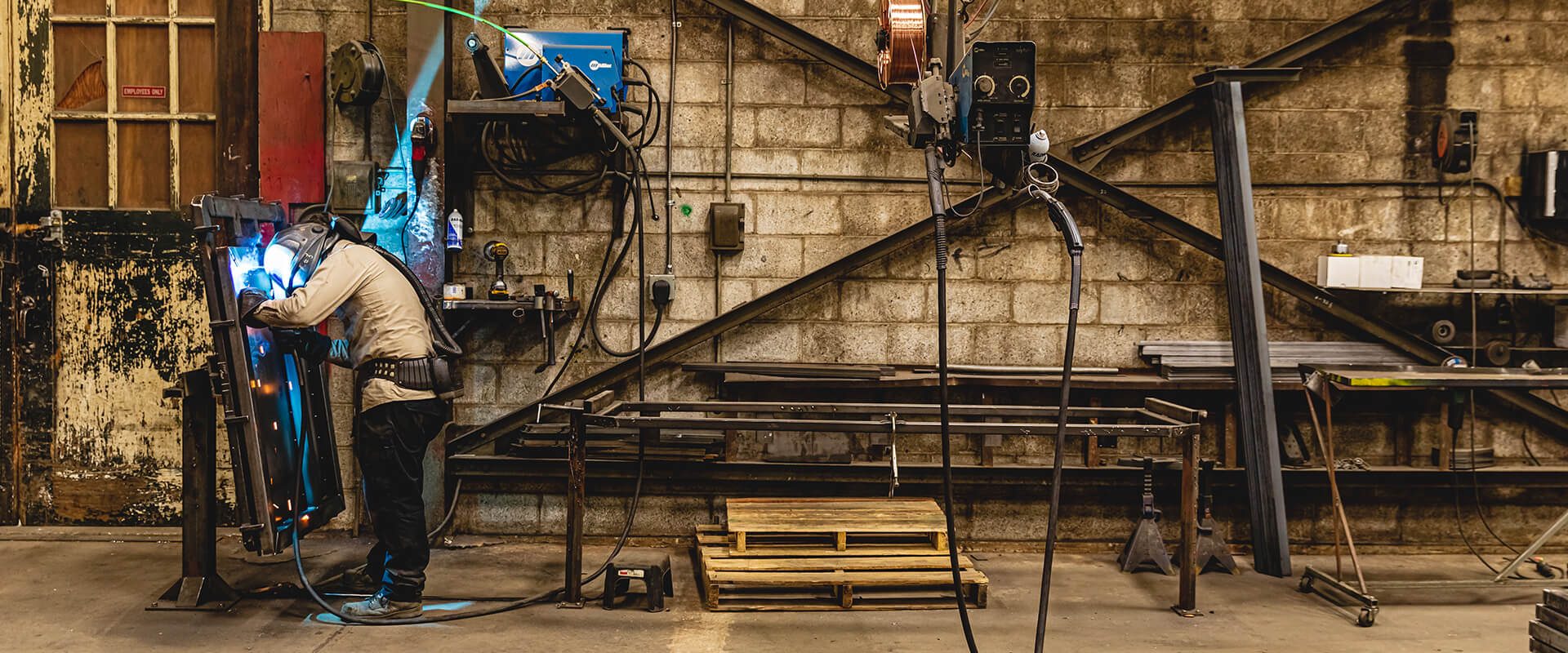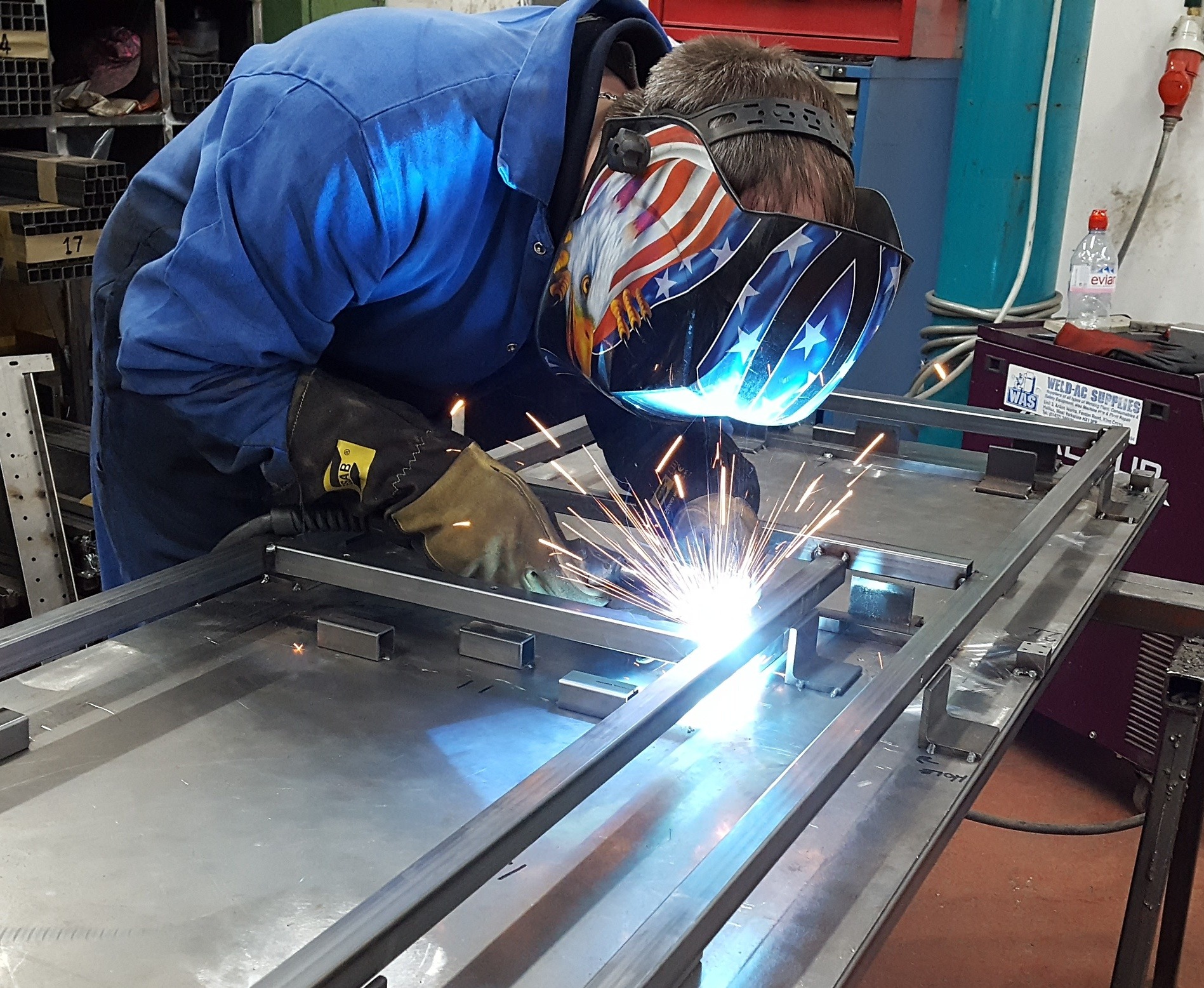All About Welding: Trick Insights Into Techniques and Finest Practices for Success
Welding includes a range of strategies, each matched for particular products and applications. Comprehending these approaches, such as GMAW, SMAW, and TIG, is crucial for attaining optimal outcomes. The ideal tools and safety practices can not be forgotten. As prep work and troubleshooting play crucial roles in the welding process, grasping these aspects can greatly enhance the top quality of the end product. What are the key factors that assure an effective weld?
Understanding Various Welding Strategies
Welding techniques encompass a variety of methods, each suited to specific applications and materials. Amongst the most typical techniques are Gas Steel Arc Welding (GMAW), Shielded Metal Arc Welding (SMAW), and Tungsten Inert Gas Welding (TIG) GMAW, also referred to as MIG welding, is prominent for its rate and flexibility, making it optimal for thin materials. SMAW, or stick welding, is favored for its simpleness and performance in outdoor settings, especially with thicker metals. TIG welding offers accuracy and control, making it suitable for detailed job and non-ferrous steels (Montana Mobile Welding and Repair Belgrade Welding). Each method has its one-of-a-kind advantages and factors to consider, permitting welders to choose the most effective technique based upon the task's demands, product type, and wanted outcomes. Comprehending these methods is crucial for successful welding
Important Welding Equipment and Tools
While numerous welding techniques need particular skills, the appropriate equipment and tools are just as important for accomplishing top quality results. Vital welding tools consists of welding makers, which differ depending upon the method-- such as MIG, TIG, or stick welding. Protective gear, consisting of aprons, gloves, and safety helmets, guarantees security and convenience during the process. On top of that, clamps and components help protect materials in position, making sure accuracy in welds. Consumables like welding poles, cord, and shielding gas are also essential components that influence the quality of the weld. Tools such as cutters and grinders promote surface area preparation and post-weld ending up, adding to a specialist result. Investing in high-grade tools inevitably boosts the performance and efficiency of welding tasks.
Safety And Security Practices in Welding
Appropriate security practices are vital in the welding industry to secure workers from possible threats. Welders have to wear ideal personal protective tools (PPE), consisting of headgears with correct shading, gloves, and flame-resistant clothing. Adequate air flow is crucial to minimize direct exposure to harmful fumes and gases produced throughout the welding procedure. In addition, workers should be learnt the appropriate handling of welding equipment to prevent mishaps. Fire safety and security actions, such as keeping combustible materials away from the welding location and having fire extinguishers readily offered, are needed. Regular examinations of equipment and workspaces can aid recognize potential risks before they lead to accidents. By sticking to these safety and security practices, welders can produce a much safer working environment and minimize dangers related to their trade.
Readying Materials for Welding
Preparing materials for welding is an essential action that substantially affects the high quality and stability of the last item (Belgrade Fabrication). Correct prep work involves cleaning the surface areas to remove pollutants such as oil, corrosion, and dust, which can endanger the weld. Techniques such as grinding, fining sand, or using solvents are commonly employed to accomplish a clean surface. Furthermore, making certain that the products mesh snugly is vital; gaps can cause weak welds. It's additionally vital to consider the alignment and positioning of the elements, as this will certainly affect the ease of welding and the final end result. Picking the suitable filler material and making sure compatibility with the base steels is crucial for attaining solid, durable welds.
Tips for Getting High-Quality Welds
Achieving high-grade welds calls for attention to information and adherence to finest practices throughout the welding procedure. Correct joint prep work is essential, making sure surfaces are cost-free and clean from pollutants. Choosing the appropriate filler material and welding method based on the base metals is vital for ideal bonding. Keeping constant travel speed and angle while welding can promote and stop defects uniformity. In addition, controlling warmth input is crucial; excessive warmth can bring about bending and damaged joints. Frequently evaluating the welds throughout the procedure enables immediate adjustments if needed. Ultimately, employing ideal post-weld treatments, such as cleaning and anxiety alleviation, can boost the toughness and stability of the weld, inevitably guaranteeing a successful outcome.
Troubleshooting Typical Welding Issues
Welding frequently offers obstacles that can influence the quality and stability of the end product. Typical concerns such as porosity, irregular weld beads, and getting too hot can occur, each requiring details repairing techniques. Recognizing these troubles is essential for welders to enhance their skills and attain suitable results.
Porosity Problems Discussed
Although porosity can typically be overlooked, it stays an important concern in welding that can endanger the honesty of an ended up product. Porosity describes the existence of little gas pockets within the weld grain, which can lead and weaken the joint to premature failing. This trouble normally emerges from impurities, dampness, or incorrect protecting gas protection throughout the welding procedure. To reduce porosity, welders should validate that the base materials are completely dry and tidy, utilize ideal shielding gases, and preserve constant welding parameters. On a regular basis evaluating the devices and setting can also help recognize possible concerns before they manifest in the weld. Addressing porosity properly is important for accomplishing strong, sturdy welds that fulfill top quality standards.

Inconsistent Weld Beans
Irregular weld beads can considerably influence the top quality and toughness of a completed item. Numerous variables add to this issue, consisting of inappropriate travel speed, incorrect amperage settings, and irregular electrode angles. When the welder moves as well rapidly, a grain might appear slim and lack infiltration, while relocating also gradually can cause too much buildup. Additionally, utilizing the incorrect amperage can result in either undercutting or excessive spatter, both of which concession weld honesty. The welder's technique, such as irregular torch activity, can also bring about uneven grain look. To reduce these troubles, welders should concentrate on maintaining steady, regulated activities and making sure appropriate equipment setups to achieve harmony in their welds. Uniformity is essential to attaining trusted and solid welds.
Overheating and Bending Issues
Excessive warm during the welding process can cause significant getting too hot and deforming concerns, impacting the architectural honesty of the work surface. These troubles usually show up as distortion, which can endanger placement and fit-up, you could try these out making further assembly challenging. Aspects adding to overheating include the selection of welding specifications, such as voltage and take a trip rate, along with the kind of material being bonded. To minimize these concerns, welders should maintain regular traveling speed and appropriate warm input while checking the workpiece temperature. In addition, preheating or post-weld warmth therapy can help minimize tensions triggered by rapid cooling - Belgrade. Regular inspection and look at here now adherence to ideal techniques are essential in avoiding getting too hot and making sure the long life and dependability of bonded structures
Frequently Asked Inquiries
What Are the Occupation Opportunities in the Welding Industry?
The welding sector provides varied occupation opportunities, consisting of positions as welders, examiners, designers, and teachers. Experts can operate in manufacturing, building and construction, aerospace, and vehicle industries, taking advantage of solid need and affordable salaries in numerous functions.
Just How Can I Boost My Welding Speed Without Compromising Quality?
To enhance welding rate without giving up top quality, one ought to practice efficient methods, preserve tools, maximize settings, and boost hand-eye coordination. Routine training and seeking responses can likewise substantially contribute to accomplishing quicker, high-grade welds.
What Accreditations Are Available for Welders?
Many accreditations exist for welders, consisting of those from the American Welding Society (AWS), the National Facility for Building And Construction Education and Research Study (NCCER), and numerous industry-specific companies. These qualifications enhance employability and demonstrate ability efficiency.
Just How Does Welding Impact the Features of Metals?
Welding influences the homes of steels by modifying their microstructure, which can cause modifications in strength, ductility, and firmness. Warm input and air conditioning rates during the procedure significantly affect these material characteristics.
Can I Bonded Dissimilar Metals With Each Other?
